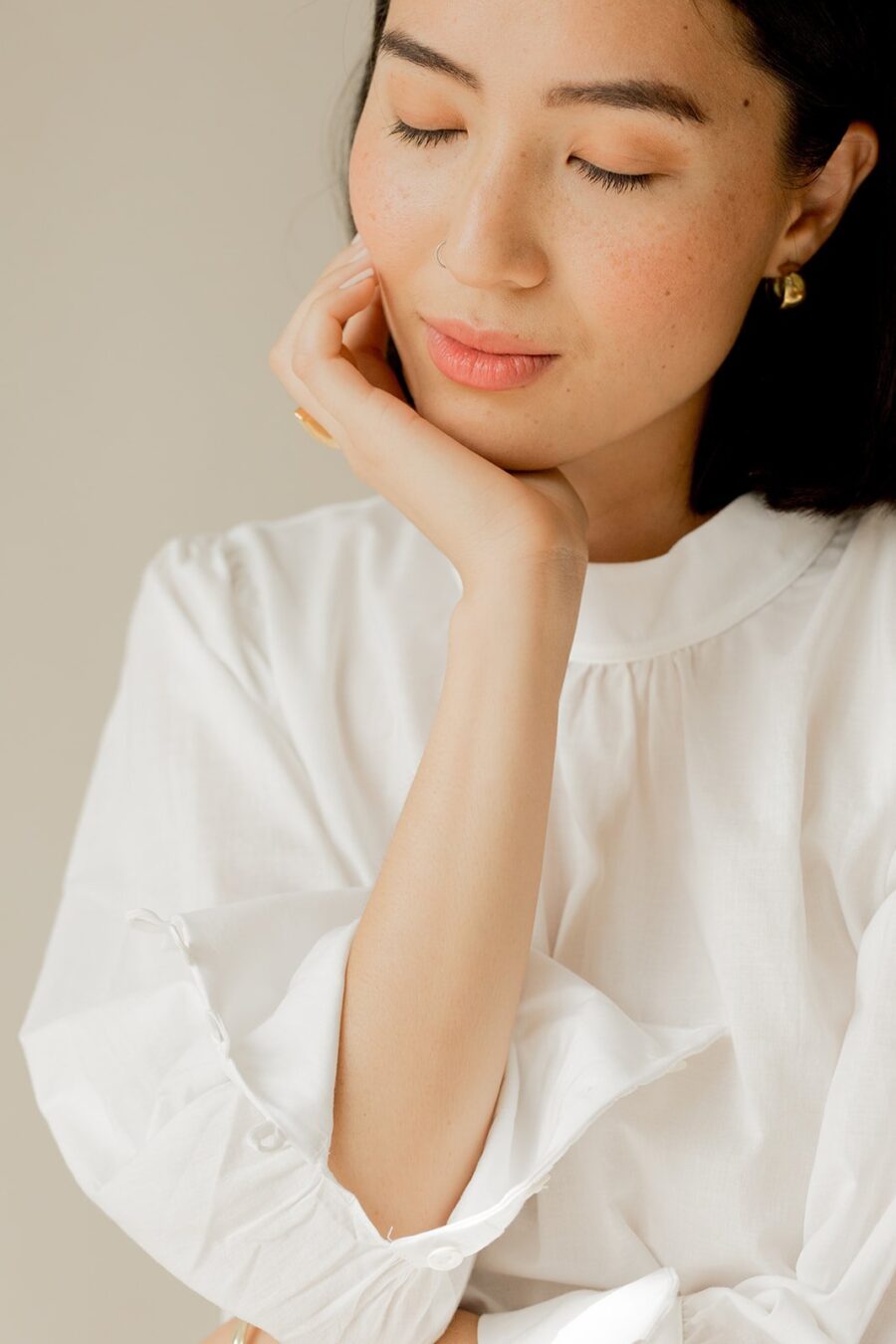
5 Eastern-Inspired Skincare & Wellness Trends To Add To Your Routine
Wellness Rituals Rooted in Eastern Tradition
As society turns towards all-natural beauty and wellness, the stars have aligned perfectly with Eastern practices and remedies, which originated from a holistic embrace of the Earth’s natural properties. Even today, you might be surprised by some of the ancient Asian origins of trends you’re familiar with—after all, the sun does rise in the east. Here are the origins of five contemporary beauty and wellness trends inspired by the East, and how you can incorporate them into your self-care routine:
1. Jade Rollers + Gua Sha
Origins: China & Vietnam
Get your chi flowing with a jade roller or gua sha (flat jade or quartz stones) to massage your face. These paint roller-shaped gadgets have popped up everywhere as of late, but the Chinese beauty tool actually dates back to the Ming Dynasty (1300-1600s). While in traditional Chinese medicine, gua sha involves scraping of one’s face to break blood vessels, more modern techniques are lighter on your skin and similar to a facial massage. This method is said to stimulate the immune system, have a therapeutic impact for chronic pain, and smooth aging signs, like fine lines and wrinkles.
Where to Shop | Try Mount Lai’s rose quartz gua sha, created by a Chinese beauty blogger and Traditional Chinese Medicine herbalist. If the jade roller is more up your alley, Herbivore’s jade facial roller is perfect for rolling into relaxation.
2. Matcha Powder
Origin: Japan
Matcha is a traditional Japanese-style, powdered green tea that involves milling the leaves to pack a more potent punch. In fact, one cup of Matcha is equivalent to 10 cups of green tea—it has 10 times the nutrients, caffeine, antioxidants, and amino acids, among other countless health benefits. Brought to Japan in the 12th century by Chinese Zen monks, Matcha was initially consumed as medicine and reserved as the “star” in the traditional Japanese tea ceremony, which revolved around purity, harmony, and the concept of wabi: imperfect beauty through simple things. Its popularity has since skyrocketed, and today you can find it in anything from lattes and green smoothies to desserts and even beauty products.
Where to Shop | Tenzo Tea has a monthly Matcha subscription; the tea is ceremonial grade and grown organically in Japan. Tenzo is also a give-back company and partners with the Thirst Project to supply clean water in developing countries. Many wellness bloggers, including Matcha aficionado Candice Kumai, recommend MatchaLove.
If you prefer to use Matcha in your beauty routine, try Boscia’s Matcha Magic Super-Antioxidant Mask, Peach & Lily’s Matcha Pudding Antioxidant Cream, or Milk Makeup’s Matcha Cleanser.
3. Yoga Nidra
Origins: India
Yoga Nidra is having a major moment. An ancient Indian practice dating back to around 700 BC, Yoga Nidra is also called yogic sleep—it exists in that sweet spot between being awake and asleep, so your body is conscious, yet deeply relaxed. Add in some props like pillows, sandbags, and blankets so that your bones feel weightless, and let true relaxation kick in. Some say that one hour of Yoga Nidra is equivalent to three hours of deep sleep.
Where to Try It | Most yoga studios offer a rendition of Yoga Nidra or incorporate its elements into a restorative practice. Look for classes on ClassPass, which gives you access to various studios for a set price.
4. K-Beauty’s 10-Step Skincare Routine
Origins: Korea
If foreign-sounding words like ampoule have entered your beauty vocabulary, you can thank the Korean 10-step skincare routine for making its way overseas. This rigorous beauty practice is thought of as the gold standard of self-care and, in Korean culture, this pampering ritual reflects meditative “me time.” It also results in healthy, glowing skin. “Eastern beauty has always focused on skin first, as opposed to makeup first,” explains Kiok Kang, a Korean-American who represents Asian-inspired beauty brands.
Add the “K” prefix (K-beauty) and you’re likely to connect some dots to its in popularity. K-pop, referring to the ever-burgeoning Korean pop music genre, is also on the rise. Take the South Korean boy band, BTS, as an example. They’ve released songs in collaboration with celebs like Ed Sheeran, Lauv, and Halsey, and fans have gushed about the boys’ glass-like skin, which is in thanks to the infamous K-beauty routine. It works for men and women alike.
Another Korean-inspired beauty trend is the extract of Yuzu (or yuju) in natural beauty products. A Korean citrus fruit that has three times as much vitamin C as a lemon, it contains more collagen—meaning less dark spots. Other Eastern extracts used in natural skincare products include Propolis—a bee-made resin that works as a potent antioxidant and skin softener; it’s perfect for combatting acne. There’s lotus extract, mung bean extract, sweet almond oil, bamboo extract, each with antibiotic and anti-inflammatory properties, that are in all kinds of beauty products, even Vegamour’s popular eyelash serum. Oil serums are trending, too. These highly-concentrated solutions (applied post-cleanser, pre-moisturizer), lock in hydration and are suitable for all skin types. Swoon.
Where to Shop | While you can find K-beauty products at generic drugstores, online platforms also carry the Korean-inspired products, including Sephora K-Beauty, Soko Glam, Peach & Lily, and YesStyle. Do your research, as there are numerous brands with committed fan bases. Read the reviews and find products based on your skin type. Some popular natural skincare brands started by Asian-American founders include 100% Pure (Korean), Tatcha (Japanese), and cocokind (Taiwanese).
5. Adaptogens
Origins: India & China
Everyone’s favorite juices and green smoothies now include adaptogens—supplemental herbs that help your body adapt to its specific physical, biological, and emotional needs. Just like mixing protein or collagen into a shake, adaptogens are the new wellness fad and help busy bees manage anxiety and stress. In fact, some of the most popular adaptogens come from the East. Reishi, Ashwagandha, and Asian ginseng are known for their “happy boost.” All these herbs are nontoxic and have been used in India for centuries as part of Ayurveda—one of the world’s oldest schools of alternative, natural medicine.
Where to Shop | We love Moon Juice for its whimsical variation of high-quality adaptogens, including Ashwagandha. Try Moon Dust, adaptogenic blends packaged in convenient sachets. Gaia Herbs also has a wide assortment of natural herbs, as do these ingestible beauty brands.
What are some other Eastern-inspired beauty and wellness trends you’ve tried?
RELATED READING
Alice is a California-grown writer thinking on the things shaping urban living, the modern woman, and living a conscious life of impact in light of a bigger world. A graduate of Northwestern University’s j-school, she spent time abroad working with a microfinance project in Peru before transitioning into a 9-5 in the global development sector. When she’s not daydreaming about opening a social impact coffee shop, you can find her traveling, plié-ing at the barre studio, or curled up with a good book. Follow her latest creative endeavors and musings at The Kind Citizen or on Instagram at @alice.zhng.
